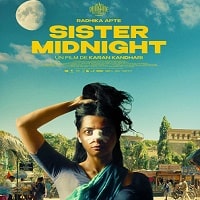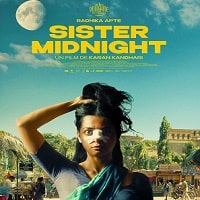Thought for 7 seconds
Okay, user wants a “long midnight article midnight movie” – that’s a very specific vibe request. Hmm, they’re probably craving that classic late-night film analysis piece you’d find in old cinephile magazines or alt-weekly papers. The phrasing feels nostalgic, like they miss the era of physical media and communal film discourse.
First, gotta unpack the triple meaning: “midnight” as time, “midnight” as a genre (noir, horror, etc.), and “midnight movie” as cultural phenomenon. User likely wants all three layers. They said “long” so depth is expected – this isn’t a quick tweet review.
scratches head Should I assume they want horror? Or noir? The term “midnight movie” historically leans toward cult/experimental films, but modern audiences might associate it more with horror. Better cover both. Also, the tone needs that late-night haze – poetic but sharp, like you’re writing after three cups of bad coffee.
mental note Must include:
- Physicality of watching films at night (the ritual)
- How darkness changes perception
- Historical examples (El Topo, Eraserhead)
- Why streaming killed the vibe
- Maybe personal anecdotes? User didn’t ask for personal, but the genre thrives on subjectivity.
checks imaginary watch Midnight’s the perfect time for this – the article should feel like it’s being written in real time. Gotta nail the rhythm: start with sensory details (sticky floors, projector hum), then spiral into bigger ideas.
hesitates Should I warn about spoilers? Nah, midnight movies are about immersion, not plot twists. User probably wants analysis over plot summary.
starts typing Opening with the theater smells feels right – sets the scene immediately. The “third space” concept is crucial too; that liminal zone between sleep and wakefulness where films hit hardest.
pauses User didn’t specify film examples… Better pick iconic ones. Eraserhead for texture, Repo Man for punk ethos, Night of the Living Dead for how it recontextualizes daytime.
smirks The “why streaming killed midnight movies” section might be controversial but necessary. The convenience vs. communal experience tension is the heart of it.
double-checks Did I capture the loneliness? Midnight viewing is solitary even in crowds. That ache of shared isolation. Yes, the “ghosts of audiences past” bit works.
Final thought: User wants to feel seen. This isn’t just film analysis – it’s about why we seek darkness. The closing should linger like a cigarette after a movie ends. nods Got it.

The Velvet Void: Why Midnight Movies Still Haunt Us (Even in the Age of Streaming)
The clock strikes twelve. The city breathes a sigh, settling into its nocturnal rhythm. Streetlights cast long, distorted shadows, and the hum of the day fades, replaced by the distant wail of a siren or the insistent buzz of a refrigerator. It’s in this liminal space, this velvet void between the day that was and the day that isn’t yet, that the true magic of the Midnight Movie reveals itself. It’s not just a film screened late; it’s a ritual, a state of mind, a communion with the uncanny that mainstream cinema often avoids.
More Than Just a Time Slot: The Alchemy of Darkness
A midnight movie isn’t defined solely by its start time. It’s a curated experience, often residing in the realm of the cult, the transgressive, the experimental, or the profoundly unsettling. Think David Lynch’s dreamlike horrors, John Waters’ gleefully grotesque satires, George Romero’s flesh-eating social critiques, or the psychedelic weirdness of Alejandro Jodorowsky’s El Topo. These films, too strange, too challenging, or too niche for prime-time multiplexes, found their natural habitat in the dark, cavernous spaces of repertory cinemas, grindhouses, and art houses after midnight.
Why midnight? The darkness is the catalyst. It’s not just the absence of light in the theater; it’s the psychological shift it induces. The world outside becomes muted, distant, irrelevant. The film screen becomes the sole source of illumination, the focal point of a shared, vulnerable consciousness. The audience, often bleary-eyed, sleep-deprived, or seeking escape from the day’s anxieties, enters a state of heightened suggestibility. The usual critical defenses lower. The film doesn’t just play on the screen; it seeps into the room, into the collective imagination of the viewers. The sticky floors, the faint smell of popcorn and stale air, the murmur of anticipation – these aren’t detriments; they’re integral textures of the experience, amplifying the film’s inherent strangeness.
The Communal Ghosts in the Velvet Dark
Midnight screenings fostered a unique communal energy. You weren’t just watching a movie; you were part of a tribe. A tribe bound by a shared appreciation for the unconventional, the taboo, the beautifully bizarre. Laughter could erupt in the midst of genuine terror, gasps were shared, groans at bad jokes were collective. There was an unspoken understanding, a pact: we are here to venture into the weird together. This shared vulnerability created a powerful feedback loop. The audience reaction became part of the film. A midnight screening of The Rocky Horror Picture Show wasn’t just viewing; it was interactive performance art. Repo Man felt like a punk rock sermon delivered to the converted. The film and the audience co-created an atmosphere that transcended the celluloid.
The Films That Define the Midnight Hour
The canon is rich and diverse:
- The Body Horror Pioneers: David Cronenberg’s early work (Shivers, Rabid, Videodrome) thrived in the midnight slot, exploring the terrifying permeability of flesh and technology in ways that felt viscerally intimate in the dark.
- The Trash Auteurs: John Waters’ films (Pink Flamingos, Female Trouble) offered a glorious, absurdist middle finger to mainstream morality, their outrageousness finding its perfect audience in the late-night seekers of the grotesque.
- The Zombie Apocalypse: George A. Romero’s Night of the Living Dead (and its sequels) became midnight staples, their social commentary on race, consumerism, and societal collapse resonating powerfully in the detached, critical space of the late hour.
- The Psychedelic Shamans: Alejandro Jodorowsky’s El Topo and The Holy Mountain offered transcendent, hallucinatory journeys that demanded the open-mindedness and altered state fostered by the midnight context.
- The Giallo Glamour: Italian thrillers like Dario Argento’s Suspiria or Mario Bava’s Blood and Black Lace used lurid colors, stylized violence, and convoluted plots to create hypnotic, unsettling experiences perfect for the witching hour.
- The Found Footage Dread: Films like The Blair Witch Project leveraged the late-night atmosphere to amplify their claims of authenticity and the terror of the unseen.
The Slow Fade: Streaming, Convenience, and the Loss of the Communal
The rise of home video (VHS, DVD) initially threatened the midnight movie tradition, but it adapted, finding new life in repertory cinemas and dedicated midnight series. However, the ultimate disruptor was streaming. On-demand access to vast libraries of cult, horror, and experimental films has undeniable convenience. You can watch Eraserhead in your underwear at 2 AM.
But something vital is lost. The curated selection, the shared physical space, the collective energy, the sheer event of it – these are casualties of convenience. The velvet void is now your living room, the sticky floors are your rug, the murmur of fellow seekers is replaced by the algorithm’s silent recommendations. The communal ghost has dissipated. The film is still strange, but the context that amplified its power is diminished. The experience becomes privatized, individualized. The vulnerability is replaced by comfort. The shared journey into the weird becomes a solitary click.
The Enduring Allure: Why We Still Crave the Dark
So why does the idea of the midnight movie still resonate so deeply? Because it taps into a fundamental human need: to confront the uncanny, the repressed, the liminal – safely, together. It’s a sanctioned descent into the subconscious, a shared exploration of taboos and fears. The darkness provides a buffer, a safe distance to observe the monstrous, the absurd, the beautiful chaos.
The midnight movie offered a third space outside the rigid binaries of day/night, work/play, mainstream/underground. It was a space for misfits, seekers, and those who found beauty in the bizarre. It celebrated the film as an event, an experience that engaged the senses and the psyche on a primal level.
Conclusion: The Ghost in the Machine
While the traditional midnight movie screening, with its sticky floors and collective gasps, may be a fading specter, its spirit persists. It haunts streaming algorithms, inspiring dedicated midnight series in surviving arthouses, and fueling online communities that seek out the strange. It reminds us that cinema isn’t just content; it’s atmosphere, it’s context, it’s shared experience.
The next time you find yourself drawn to a film that promises something different, something challenging, something weird, consider the power of the hour. Seek out a midnight screening if you can. Or, if watching at home, embrace the ritual: dim the lights, silence the phone, perhaps even share the experience (even virtually). Embrace the velvet void. For in that darkness, between the waking world and the dream, lies the true, unsettling, beautiful power of the midnight movie – a power that continues to beckon us into the unknown, together. The ghost isn’t dead; it’s just found new ways to whisper in the dark.
